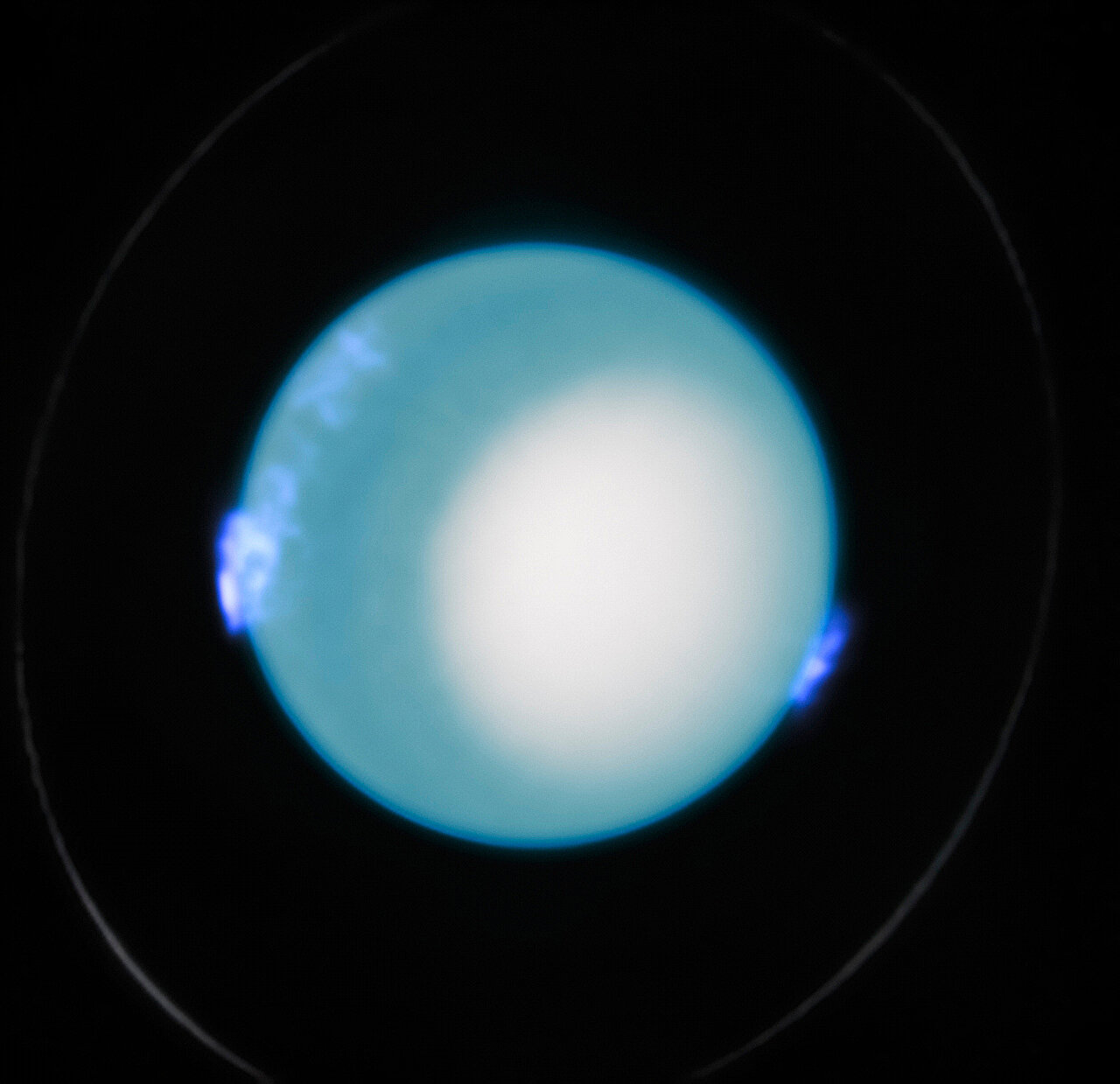Scientists found that the period of rotation of Uranus around its axis was 28 seconds longer than previously thought. This was established due to the observation of polar lights at the poles of the planet, made with the help of the Hubble space telescope.

Measuring the magnetic poles of Uranus
Scientists said on Monday that observations by the Hubble Space Telescope confirmed that Uranus makes a complete revolution in 17 hours, 14 minutes and 52 seconds. That’s 28 seconds longer than the NASA Voyager-2 spacecraft estimated in the 1980s.
The team led by French studied decades of observations of auroras on the ice giant to track its magnetic poles. This long-term tracking helped determine a more accurate rotation period for Uranus, the seventh planet from the Sun. From this distance, Uranus orbits the Sun in about 84 Earth years.
New approach to defining rotation
“Continuous observations with Hubble were crucial,” study lead author Laurent Lamy of the Paris Observatory said in a statement.
Lamy and his international team said this new approach could help determine the precise rotation of any world with polar lights and a magnetosphere.
The findings, published in the journal Nature Astronomy, come a few weeks before the 35th anniversary of Hubble’s launch. NASA’s space shuttle Discovery delivered a space telescope into orbit on April 24, 1990.
According to phys.org


